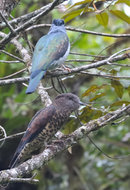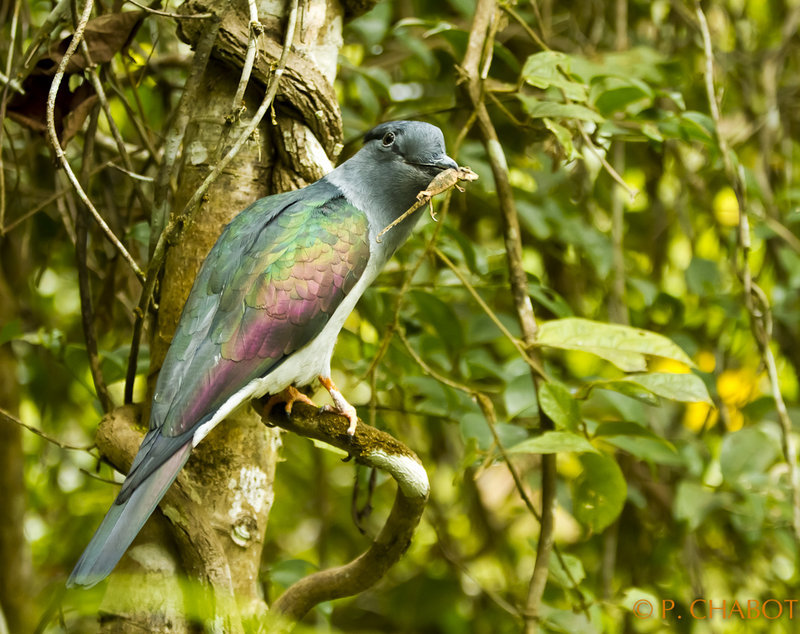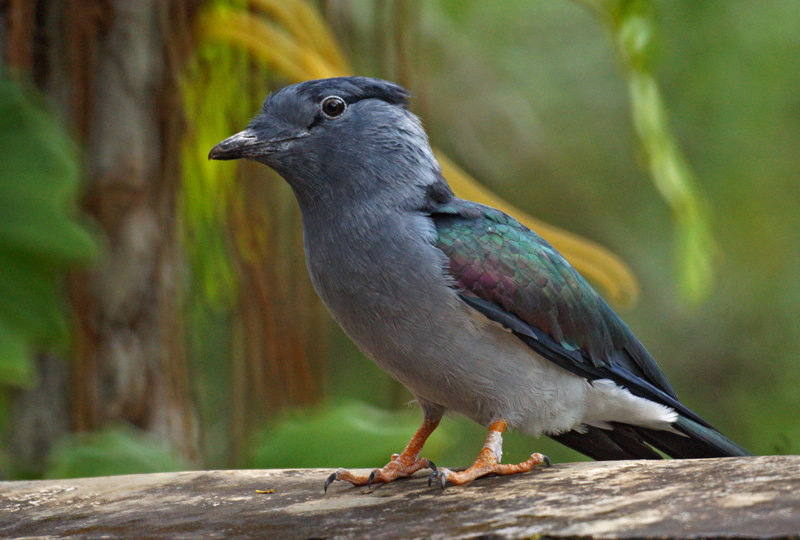
Leptosomus discolor
TAXONOMY
Cuculus discolor Hermann, 1783, Madagascar. Three subspecies.
OTHER COMMON NAMES
English: Cuckoo-roller; French: Courol; German: Kurol; Spanish:
Carraca Curol.
PHYSICAL CHARACTERISTICS
20 in (50 cm); 0.48–0.53 lb (219–240 g). The courol or cuckoo
roller is a large bird characterized by a massive head with a
stout bill; long, slightly rounded wings; a moderately long,
broad tail; and very short legs. Back and wings grayish black,
strongly glossed with metallic green and mauve-red, underparts
ash gray, and crown to nape black (male). In the adult female
and young, upperparts are dark brown, barred black and rufous
on the crown; underparts are pale rufous, boldly spotted with
black.
DISTRIBUTION
Madagascar and Comoro Islands.
HABITAT
Forest and woodlands, especially at margins. Up to about 6,400
ft (2,000 m), the courol is widely dispersed in forests and
wooded areas of Madagascar, being encountered more frequently
at or near forest margins, where a preference is shown
for large evergreen trees with leafy crowns. On the Comoro Islands,
there seems to be a wider habitat tolerance, with the
birds less dependent on tall trees.
BEHAVIOR
Arboreal; singly or pairs when breeding, groups at other times.
Noisy, conspicuous in flight, inconspicuous at rest in leafy treetops.
During the breeding season, courols seem to be highly
territorial and usually are encountered singly or in pairs, but at
other times are seen in groups of a dozen or more, often with
males outnumbering females. When silently feeding or resting
amid inner branches of leafy trees, they can escape detection,
but in the air they are noisy and conspicuous, the peculiarly undulating
flight accompanied by loud, whistling call notes.
FEEDING ECOLOGY AND DIET
Large insects and small reptiles, mainly chameleons, captured
amid foliage and struck repeatedly against branch before swallowing.
REPRODUCTIVE BIOLOGY
Monogamous; breeds October–January; 2–4 white eggs laid in
tree hollow; incubation by female probably 20 days; chicks fed
by both parents, fledging at 30 days. Breeding by courols also
takes place during summer monsoon season, when a clutch of
up to four white eggs is laid in a hollow limb or tree hole, and
incubation by the female lasts at least 20 days. Newly hatched
chicks are down covered.
CONSERVATION STATUS
Not threatened, widespread and common.
SIGNIFICANCE TO HUMANS
Largely untouched, but sometimes killed to make love potions.
Photo Gallery of - Courol




 Animalia Life
Animalia Life